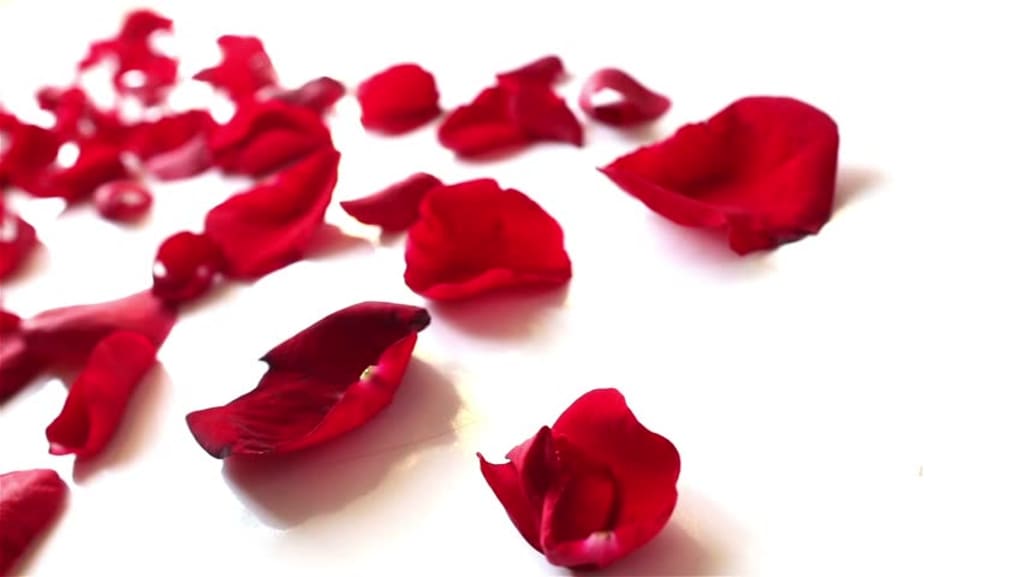The Life Force Driving Us All
Color Symbolism in 'American Beauty'

The 1999 acclaimed film American Beauty depicts what "should" exemplify a typical, well-to-do American family. In a struggle to conform to societal standards of a respectable lifestyle, dysfunction only ensues. Simply witnessing the angst and struggles experienced by the characters of American Beauty, viewers gather that the film is a satire of American culture. But by paying closer attention to the dynamic use of the color red and the red rose, viewers will better appreciate the film's criticism of American standards of beauty.
Protagonist Lester Burnham experiences a midlife crisis relatable to that experienced by your average American man. His sexless marriage and dissatisfying job are common real life stressors. His wife, Carolyn, obsesses over her job as a real estate agent, her hyper-ambition pushing her to the brink of mental instability. Meanwhile, their daughter Jane finds comfort in Ricky Fitz, a covert marijuana dealer who enjoys documenting Jane and random objects with his camcorder. He is the nightmare of conservative, real world parents, as well as an object of envy for rebellious teens. Lester, depressed and unstable, gets a job in fast food, smokes genetically engineered marijuana, and buys the hot rod of his childhood dreams. Though Lester's depression is real to many, his random and impulsive behavior is socially anathematized, frowned upon as an indicator of immaturity and possibly, mental illness. His recklessness demonstrates his breaking free from societal demands, though his actions do not bear positive consequences.
Sexually fixated on Jane's friend Angela, Lester vigorously exercises so she will find him more attractive. However, Lester's sexual advances towards teenaged Angela are thwarted when he discovers she is a virgin. Void of the seduction Lester once thought she wielded, Angela reveals herself as rather plain. Succumbing to the realization that he is gay, Ricky's father Frank approaches Lester for comfort after Ricky angrily leaves home. Kissing Lester, only to be told that he “had the wrong idea,” Frank is mentally jarred, and shoots Lester in the head. A dead Lester describes experiences recollected within the second before his death. Despite his untimely murder, Lester contentedly states, “It is hard to stay mad when there's so much beauty in the world.” His message can be likened to the belief that life is too short to be bitter and distraught. Life may have its injustices, though we endure them knowing many possibilities remain for recovery and improvement. For instance, while our society believes it is acceptable to mourn the death of a loved one, the bereaved must move on and continue on with life's day-to-day routines.
Notably, the color red symbolizes a life force that motivates the film's characters to pursue their own happiness in spite of social rejection. Carolyn meticulously clips red roses. After they are clipped, the magnitude of the life force has been curbed. Carolyn then struggles to sell a drab house, muttering “I will sell this house today!” As the life force has been cut, she breaks down in tears and slaps herself after failing to sell the house. She is too stressed and overwhelmed to effectively deal with pressures to be successful. She regularly drives by red signs advertising rival realtor Buddy Kane, a foreshadowing of her sexual awakening.
Without fail, Lester's fantasies of Angela are graced with red rose petals. Lester is not ashamed of his sexuality, for he feels it cannot be repressed by societal notions of propriety. The color red, our symbolic life force, enables Lester to fulfill his desires without guilt. This is very clear when acknowledging that Lester impulsively bought a red hot rod he wanted for years.
Jane, rebellious and independent, is almost always wearing a sweater decorated with red roses or red stripes. In Ricky's favorite video, the red wall behind the floating plastic bag symbolizes the life force facilitating movement despite physical limitations. No one is touching the plastic bag, but it continues to dance in a modest wind, “like a kid begging to be played with.” Throughout the film, the color red consistently indicates that a character has successfully fulfilled desires that would otherwise be suppressed by an orthodox, and even conservative, society.
Considering red's representation of the life force and fulfilling forbidden desires, it is reasonable to conclude that the red rose - delicate, lush, and natural - is a tangible, compact manifestation of such. Carolyn clips her roses however she pleases, ultimately displaying them to enhance the aesthetics of her yard. Likewise, she fusses over Jane's rebellious way of dressing, lamenting that she is not beautiful. The roses, manipulated by Carolyn, exemplify her idea of beauty. In Lester's fantasies, Angela is adorned with rose petals. This is significant when we note that roses are intact elsewhere in the film. As roses are natural manifestations of perfect beauty, it can be concluded that when taken apart, they aren't as lovely. Angela is too young to engage in sexual relations with a middle-aged man. She is a virgin. The rose petals in Lester's fantasies suggest the corruption of her innocence, the “plucking” of her virginity. Should Lester have sex with her, she would no longer be a natural beauty of the purest form. In their final encounter, we see a vase filled with roses. Their completeness clarifies that in reality, Angela has always been pure and beautiful.
The color red and red roses both recur to convey the idea that a life force enables us to fulfill our utmost desires, even in the face of oppressive societal standards and expectations. Red's appearance signifies that the film's characters have achieved, or try to achieve, what they sincerely desire. However, what they desire may not be approved by others. Roses are the film's most complete manifestation of beauty, though beauty is not limited to one objective definition. To Carolyn, a rose is beautiful because she can manipulate it to her liking. Before being alone with Angela, Lester sees rose petals as beautiful in that they offer promises of sexual fulfillment. However, when Angela and a vase of intact roses share a scene, we see the roses as symbolic of a societal standard of beauty specific to a young virgin. In real world society, it is agreed that a rose is beautiful, a symbol of love and romance. But that this beauty can mean different things from individual to individual must be noted. In American Beauty, a family and their neighbors struggle to conform to what society thinks is right, normal, and beautiful. But the pressure is intense, dysfunction attributed to threatened individual ideals. Beauty can be agreed upon to be a real, descriptive concept. However, what exactly constitutes beauty will never be an object of pure consensus, in 2017 and beyond.
About the Creator
Kristine Brown
Freelance writer who also paints. Loves wandering through historic neighborhoods and photographing trinkets left on the ground.






Comments
There are no comments for this story
Be the first to respond and start the conversation.